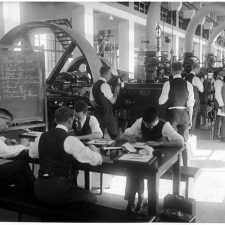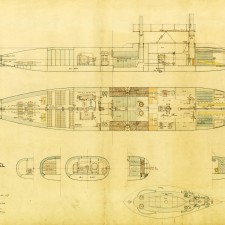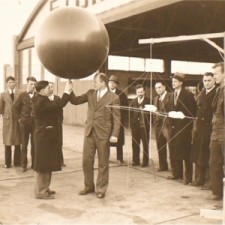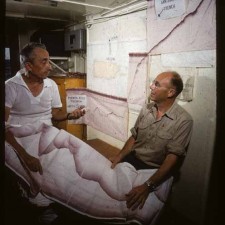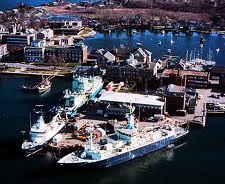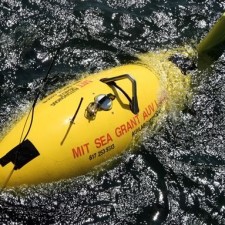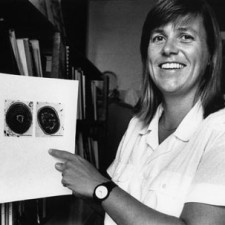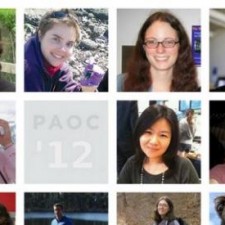History
Shaping the Study of the Oceans
For more than a century, MIT researchers have concentrated on the problems and opportunities presented by the oceans. MIT was one of the first educational institutions to include oceanography in its curriculum and has been instrumental in the development of the discipline.
Since the turn of the 20th century, MIT has helped shape the evolution of ocean research with advances in hydrodynamics, structural mechanics and dynamics, shipbuilding, underwater sonar, autonomous underwater vehicles, and exploration of the physics, chemistry and biology of the oceans.
Marine Engineering and Naval Architecture
The present-day Center for Ocean Engineering at MIT traces its history back to a Marine Engineering and Naval Architecture option that was first offered in the Department of Mechanical Engineering in 1886. This led to the creation of the Department of Naval Architecture in 1893, which in 1910 became the Department of Naval Architecture and Marine Engineering.
The Navy and MIT started the Naval Construction program in 1901, which continues to this day and has graduated the majority of technical admirals in the Navy. In 1922, Charles Herbert Pratt left a large gift to MIT to build the Pratt School of Naval Architecture (Building 5). Completed in 1922, it was one of the earliest additions to the new MIT Cambridge campus.
 Read more about the history of ocean engineering study at MIT.
Read more about the history of ocean engineering study at MIT.
Learning to Study—and Manage—the Tides
In 1931, Professor Kenneth Reynolds and his colleagues in the MIT Department of Civil and Environmental Engineering (CEE) invented the first hydraulic model that recreates tidal motion. The innovation allowed researchers to study means of slowing tidal currents in the Cape Cod Canal.
 Read about other CEE milestones.
Read about other CEE milestones.
Establishing the First Department of Meteorology
Scientific study of the fluid earth (meteorology and physical oceanography) began in the 1930s as a section of meteorology created by the famous Swedish meteorologist Carl Gustav Rossby in what was then the MIT Department of Aeronautics. Rossby established collaborations with the new Woods Hole Oceanographic Institution (WHOI) and by 1941, meteorology and physical oceanography had evolved into the first department of meteorology in the United States.
In the 1950s and 1960s, particularly under the leadership of Henry Houghton, this department — which eventually changed its name to the Department of Meteorology and Physical Oceanography — became preeminent with the presence of such notable scientists as Professors Charney, Phillips, Starr, Lorenz ,Stommel, and others. These scientists laid down large tracts of knowledge that provided the theoretical underpinning of much of modern meteorology and physical oceanography.
 Learn more about Meteorology and Physical Oceanography at MIT.
Learn more about Meteorology and Physical Oceanography at MIT.
 Article: ‘Mapping the Storms of the Sea:’ How MIT professor Henry Stommel’s bold experiment gave rise to modern oceanography/ MIT Technology Review
Article: ‘Mapping the Storms of the Sea:’ How MIT professor Henry Stommel’s bold experiment gave rise to modern oceanography/ MIT Technology Review
Using Sound to Explore the Ocean
Around the middle of the 20th century, Harold Edgerton, head of MIT’s Stroboscopic Light Lab, was developing techniques for underwater exploration using sonar devices and flash photography. Beginning in 1953, he worked closely with ocean pioneer Jacques Cousteau to produce images of marine life never before captured on film. Together, they produced the first underwater time-lapse photography and developed side-scan sonar technology, which was used to search the sea floor for wrecks. Side-scan sonar technology was a critical tool in finding the Titanic as well as many other shipwrecks.
 See historic video footage of Cousteau and Edgerton at work.
See historic video footage of Cousteau and Edgerton at work.
 Article: Remembering “Papa Flash!” The MIT Professor Who Brought Vision Underwater/ Oceans at MIT
Article: Remembering “Papa Flash!” The MIT Professor Who Brought Vision Underwater/ Oceans at MIT
Collaborating with Woods Hole Oceanographic Institution
For more than 40 years, MIT has collaborated with Woods Hole Oceanographic Institution (WHOI), the largest private nonprofit ocean research, engineering, and education organization in the world. Together the two institutions are addressing urgent challenges like sea level rise, diminishing Arctic ice, ocean acidification, and climate change—and communicating that knowledge to students, researchers, and to the world at large. Launched in 1968, the MIT-WHOI Joint Program in Oceanography is regarded as the premier graduate program of its kind.
 Learn more about the MIT-WHOI Joint Program.
Learn more about the MIT-WHOI Joint Program.
MIT Designated the First Sea Grant College
In 1970, MIT was designated the first Sea Grant College. The attendant funding made possible a rigorous research program, dedicated outreach initiatives, and integrated educational projects that provide real-world solutions to coastal dilemmas and educate the coastal stewards of tomorrow. Under MIT Sea Grant, Institute engineers revolutionized the development of the autonomous underwater vehicle (AUV), transforming the capabilities of ocean researchers.
 Learn more about MIT Sea Grant.
Learn more about MIT Sea Grant.
Parson’s Laboratory Formed
The Hydrodynamics Laboratory of Civil Engineering added two floors and was renamed the Ralph M. Parsons Laboratory. Research expanded into the aquatic and environmental sciences under the leadership of professors Arthur Ippen and Donald Harleman. Today, faculty members in the Parson’s Lab are world leaders in microbial biology with a particular focus on marine environments.
 Read about the research underway at Parsons Laboratory.
Read about the research underway at Parsons Laboratory.
Launching the Department of Earth, Atmospheric and Planetary Sciences
Recognizing the essential unity of the earth sciences, a merger was arranged in 1983 of the Department of Geology and the Department of Meteorology into a single Department of Earth, Atmospheric and Planetary Sciences, forming probably the broadest and deepest such organization anywhere in the world..
 Learn more about Earth, Atmospheric and Planetary Sciences.
Learn more about Earth, Atmospheric and Planetary Sciences.
Discovering Prochlorococcus
In 1986, a team led by Professor Sallie (Penny) Chisholm discovered prochlorococcus, the smallest and most abundant oxygen-producing organism on Earth. Chisholm developed this ocean microbe into a model system for environmental microbiology in the Parsons Laboratory.
 Read about the research underway at Parsons Laboratory.
Read about the research underway at Parsons Laboratory.
Program in Atmospheres, Oceans and Climate Launched
In the 1990’s Prof Carl Wunsch of EAPS led the World Ocean Circulation Experiment (WOCE) aimed at establishing the role of the World Ocean in the Earth’s climate system. In 1996 he became the first director of the Program in Atmospheres, Oceans and Climate (PAOC), which was created to oversee EAPS academic programs that pertained to the atmosphere and ocean. Since then, PAOC has continued to broaden its interests, which now include aspects of geology, hydrology, and planetary problems. PAOC is also responsible for MIT’s part of the Joint Program with WHOI in the areas of physical and chemical oceanography.
Center for Ocean Engineering Formed
In 2005 activities in ocean engineering at MIT were consolidated into a new Center for Ocean Engineering within the Department of Mechanical Engineering. Today the COE, led by Prof. Michael Triantafyllou, is at the forefront of ocean science and engineering, with significant efforts in fluid mechanics and hydrodynamics, acoustics, offshore mechanics, marine robotics and sensors, and ocean sensing and forecasting. In addition, the naval construction program provides advanced graduate education on the design of naval ships and vehicles.
 Read more about Center for Ocean Engineering.
Read more about Center for Ocean Engineering.
Taking on 21st-Century Challenges
In December of 2011, the MIT Environmental Research Council (ERC), appointed by MIT President Susan Hockfield, presented an interdisciplinary effort linking MIT research in six areas — ocean, climate, water, ecological resilience, contamination mitigation, and sustainable societies — in the common mission of solving pressing environmental challenges. The oceans will become a centerpiece of this new initiative.

